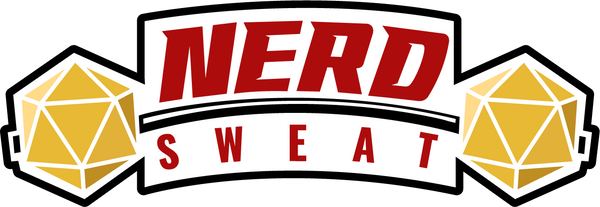
Adventurers Assemble: Using D&D for Corporate Team-Building Activities
Picture this: your office team, usually stuck in spreadsheets and email chains, now finds themselves deep in the depths of a crumbling castle, torches flickering as they debate the best way to cross a trap-ridden bridge. The barbarian (your CFO) wants to charge through, the rogue (your quiet but observant coworker) suggests sneaking around, and the wizard (your tech lead) is researching the safest solution. Suddenly, the team isn’t just working together—they’re adventuring together.
Dungeons & Dragons (D&D) isn’t just for dice-rolling nerds in basements (though, let’s be honest, that’s still a great way to play). It’s a powerful tool for corporate team-building that fosters creativity, collaboration, and problem-solving. Let’s explore why bringing tabletop RPGs into your workplace might be the most effective (and fun) training session your team has ever had.
Why D&D Works for Team-Building
Traditional corporate team-building exercises—trust falls, scavenger hunts, awkward icebreakers—often feel forced. D&D, on the other hand, provides a structured yet flexible environment where employees naturally develop communication, leadership, and conflict-resolution skills while immersed in an engaging story.
1. Collaboration & Communication
- A successful D&D session relies on teamwork. Players must communicate their plans, share information, and adapt to ever-changing scenarios.
- Example: The team faces a locked gate. The fighter suggests brute force, the wizard searches for arcane clues, and the bard attempts to charm the guard. Through discussion, they find the best solution—mirroring real-world problem-solving dynamics.
2. Leadership Development
- Every campaign needs leadership, but it doesn’t always come from the boss. D&D allows different personalities to take charge depending on the situation.
- Example: A high-pressure scenario (escaping a collapsing cave) might bring out the strategist in a normally reserved employee, just as a brainstorming meeting in the real world might showcase hidden leadership potential.
3. Creative Problem-Solving
- Unlike rigid workplace challenges, D&D allows for out-of-the-box solutions. There’s no single right answer—only the best plan your team can devise.
- Example: The party must convince a stubborn dwarf king to grant them passage. Do they intimidate, persuade, or stage a dramatic fake prophecy? The approach depends on team creativity, just like finding innovative solutions in business.
How to Run a D&D Team-Building Session at Work
Even if your team has never played D&D, introducing it can be simple.
Step 1: Choose the Right Format
- One-Shot Adventures: Keep it short—2 to 3 hours max. A single-session game eliminates long-term commitment concerns.
- Pre-Made Characters: Instead of complex character creation, provide ready-made options (the brave knight, the clever rogue, the talkative bard).
- Simplified Rules: Use streamlined rules (such as the D&D 5E Starter Set or Honey Heist for absolute beginners).
Step 2: Set the Stage
- Start with a simple workplace-relevant premise:
- The Great Office Heist: Recover stolen company secrets from a dragon’s lair (aka, the rival company’s castle).
- Crisis Management in a Fantasy World: Navigate a town in chaos after a magical mishap (parallel to handling unexpected real-world work challenges).
- The Missing CEO Mystery: Investigate why the company’s founder disappeared—corporate espionage or a teleportation gone wrong?
Step 3: Encourage Role-Playing & Engagement
- Give team members small in-game incentives (a magic item or inspiration points) when they take creative approaches or collaborate well.
- Make it fun, not competitive—everyone is working toward a shared goal.
Resources to Get Started
-
Beginner-Friendly RPGs:
- Lost Mine of Phandelver (D&D Starter Set) – Great for new players.
- Honey Heist – A hilarious, rules-light RPG where players are criminal bears (great for relaxed team play).
- Fiasco – A collaborative storytelling RPG with minimal mechanics, ideal for improvisation and creativity.
-
Virtual Play Options:
- Roll20.net – A free online platform for running D&D games remotely.
- Foundry VTT – A robust digital tool for hosting RPG sessions with maps, automation, and collaboration.
- D&D Beyond – An easy way to manage character sheets and rules online.
- Books & Guides:
-
- The Lazy Dungeon Master by Sly Flourish – A great resource for running streamlined, engaging sessions.
- The Functions of Role-Playing Games: How Participants Create Community, Solve Problems and Explore Identity by Sarah Lynn Bowman – Fantastic insights into role-playing and collaborative storytelling for building teams.
The Final Roll
D&D isn't just a game—it’s a mirror for how we interact, solve problems, and lead in the real world. Whether your office is a team of warriors facing an enchanted forest or a squad of marketers facing a product launch, the skills required are the same: teamwork, creativity, and adaptability.
So, the next time someone suggests another dull icebreaker at work, counter with this:
"What if, instead, we save a kingdom?"
Your team might just surprise you. 🎲✨
